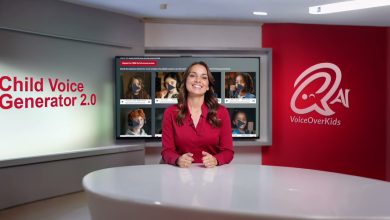Fit Testing: Ensuring Respirator Effectiveness in Occupational Safety

In workplaces where employees are exposed to airborne contaminants, the use of respirators is critical for health and safety. However, simply providing respirators is not enough; ensuring that they fit properly is essential. This process is known as fit testing. In this article, we will explore what fit testing entails, its importance, types of fit testing, procedures involved, regulatory requirements, and best practices for implementing an effective fit testing program.
What is Fit Testing?
Fit testing is a method used to determine how well a respirator fits an individual’s face. The objective is to identify any gaps or leaks that could allow hazardous substances to enter the respirator. Proper fit is vital because a poorly fitting respirator can compromise the protection it offers, leaving workers at risk of inhaling harmful particles, gases, or vapors.
Why is Fit Testing Important?
The significance of fit testing extends beyond compliance with regulations; it plays a crucial role in safeguarding workers’ health. Here are some key reasons why fit testing is essential:
Health Protection: Fit testing ensures that respirators provide adequate protection against respiratory hazards, preventing diseases related to inhalation of toxic substances.
Regulatory Compliance: Organizations are required to comply with regulations set forth by agencies such as the Occupational Safety and Health Administration (OSHA) in the United States. Failure to adhere to these regulations can lead to legal repercussions and fines.
Employee Confidence: Knowing that their respirators fit properly can boost employee morale and confidence in their safety measures, leading to higher compliance with wearing PPE.
Customization: Fit testing helps identify the right type and size of respirator for each individual, accommodating various facial shapes and sizes.
Types of Fit Testing
Fit testing can be broadly categorized into two primary methods: qualitative fit testing (QNFT) and quantitative fit testing (QNFT). Understanding these methods is crucial for choosing the right fit testing approach for your organization.
Qualitative Fit Testing (QNFT)
Qualitative fit testing is a pass/fail test that relies on the user’s sensory response to detect leaks. The individual wears the respirator and is exposed to a test agent, often a harmless aerosol or vapor, which is designed to elicit a detectable response if there is a leak.
Common Test Agents:
Bitrex: A bitter substance that individuals can taste.
Saccharin: A sweet-tasting substance.
During the test, the user performs a series of movements—such as turning their head, talking, and bending over—to assess whether they can detect the test agent inside the respirator.
Pros of QNFT:
Quick and straightforward to administer.
Requires minimal equipment and setup.
Provides immediate feedback.
Cons of QNFT:
Subjective, as it depends on the user’s ability to sense the test agent.
May not provide comprehensive data on fit quality.
Quantitative Fit Testing (QNFT)
Quantitative fit testing provides an objective measurement of respirator fit by using specialized equipment to quantify the amount of leakage. This method involves measuring the concentration of a test agent inside the respirator compared to its concentration outside.
Common Equipment:
Fit Testing Machines: Devices that analyze air samples to determine fit factor values.
The fit factor represents the effectiveness of the respirator in protecting the wearer, with higher values indicating a better fit.
Pros of QNFT:
Provides numerical data on fit quality, allowing for precise evaluations.
Less subjective than qualitative tests.
Cons of QNFT:
Requires specialized equipment and trained personnel.
Generally takes longer to complete than qualitative tests.
Fit Testing Procedures
The fit testing process typically follows a series of well-defined steps. Regardless of the chosen method, the following procedures are generally applicable:
Step 1: Preparation
Before conducting fit testing, ensure both the testing environment and the user are prepared:
Select a Suitable Location: Choose a quiet, well-ventilated area free from distractions.
User Readiness: Instruct the user not to eat, drink, smoke, or chew gum for at least 30 minutes prior to testing.
Educate the User: Provide training on the importance of fit testing and how to wear a respirator properly.
Step 2: Respirator Inspection
Inspect the respirator for any damage or defects before the fit test. Ensure it is clean, in good working condition, and fits the user appropriately according to the manufacturer’s instructions.
Step 3: Selecting the Right Respirator
Help the user select the appropriate respirator model and size based on their facial features. Proper sizing is crucial for effective fit testing.
Step 4: Conducting the Fit Test
Qualitative Fit Testing:
The user dons the respirator and is exposed to the test agent while performing various exercises.
The tester observes whether the user can detect the test agent during the exercises. A successful fit indicates that no leaks are present.
Quantitative Fit Testing:
The user wears the respirator, and the fit testing machine measures the concentration of the test agent inside and outside the respirator.
The fit factor is calculated, providing a numerical representation of the respirator’s effectiveness.
Step 5: Documentation
After completing the fit test, document the results, including:
The type of test conducted (qualitative or quantitative).
The respirator model and size used.
The fit factor or pass/fail result.
Any observations or notes regarding the fit.
Step 6: Follow-Up
Provide feedback to the user based on the fit test results. If the respirator did not pass the test, recommend alternative models or sizes and retest after adjustments have been made.
Regulatory Guidelines
Fit testing is subject to various regulations that ensure workplace safety. OSHA’s Respiratory Protection Standard (29 CFR 1910.134) outlines the requirements for fit testing respirators. Key points include:
1. Frequency of Fit Testing
Employees must be fit-tested before using a respirator in the workplace.
Retesting is required at least annually or whenever significant changes occur in the user’s physical condition (e.g., weight loss or gain, dental work).
Recordkeeping
Employers must maintain records of fit test results, including the date of the test, the individual tested, and the results. These records should be readily accessible for compliance verification.
Training Requirements
Employers must provide training on the proper use of respirators, including how to conduct a user seal check before each use. Employees should also be educated on the importance of fit testing and the potential consequences of improper fit.
Best Practices for Fit Testing
To ensure effective fit testing in the workplace, consider implementing the following best practices:
1. Schedule Regular Fit Tests
Conduct fit tests regularly to maintain compliance and ensure ongoing protection. Schedule tests at least annually or whenever significant changes occur in the user’s physical condition or respirator type.
Educate Employees
Provide comprehensive training to employees on the importance of fit testing and proper respirator use. Educated employees are more likely to comply with safety protocols.
3. Involve Employees in the Process
Engage employees in the fit testing process by allowing them to actively participate. This may include selecting their respirator model or size and providing feedback on comfort and fit during testing.
Utilize Qualified Personnel
Ensure that fit tests are conducted by trained personnel familiar with the procedures and equipment used. This will help ensure accuracy and reliability in the testing process.
5. Maintain Equipment
Regularly inspect and maintain fit testing equipment to ensure accurate results. Follow the manufacturer’s guidelines for calibration and maintenance.
Challenges in Fit Testing
Despite its importance, fit testing can encounter several challenges. Here are some common issues and potential solutions:
1. Employee Resistance
Some employees may resist wearing respirators or participating in fit testing due to discomfort or a lack of understanding of its importance.
Solution: Address concerns by providing education on the risks of exposure to airborne contaminants and the importance of fit testing. Ensure that respirators are comfortable and appropriately sized.
Time Constraints
Conducting fit testing can be time-consuming, especially in larger organizations with many employees.
Solution: Schedule fit tests during regular training sessions or safety meetings to minimize disruption. Consider using a qualified third-party provider to conduct fit testing efficiently.
3. Variability in Fit
Factors such as facial hair, glasses, and even weight fluctuations can affect the fit of respirators.
Solution: Educate employees on the importance of maintaining a clean-shaven face for a proper seal or using alternative respirator options for those with facial hair. Provide solutions for employees who wear glasses, such as glasses-friendly respirators.
The Future of Fit Testing
As industries evolve and new technologies emerge, the future of fit testing is likely to see significant advancements. Here are some trends to watch:
Integration of Technology
Emerging technologies, such as virtual reality (VR) and artificial intelligence (AI), could revolutionize fit testing. VR simulations could allow for more realistic assessments of respirator fit, while AI could analyze fit data to recommend optimal respirators for users.
Enhanced Training Methods
Innovative training methods, including online modules and interactive platforms, may improve employee understanding of the importance of fit testing. This could lead to increased compliance and safety.
Personalized Respiratory Protection
As knowledge of individual anatomy increases, the industry may move towards more personalized respirator designs that cater to the unique facial structures of users, further enhancing safety and comfort.
4. Ongoing Research and Development
Ongoing research into respiratory health and the effectiveness of various respirator models will continue to inform best practices in fit testing and respirator selection.
Conclusion
Fit testing is a vital component of workplace safety programs, ensuring that respirators provide effective protection against respiratory hazards. By understanding the types of fit testing, implementing proper procedures, adhering to regulatory requirements, and embracing best practices, organizations can create a safer work environment for their employees. As technology advances, the future of fit testing promises to enhance the effectiveness and efficiency of respiratory protection, ultimately leading to improved health outcomes for workers in high-risk industries. Prioritizing fit testing not only demonstrates a commitment to safety but also fosters a culture of health and well-being within the organization.




